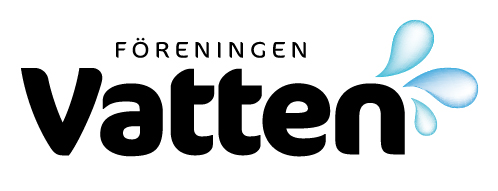UTILIZATION AND TREATMENT OF SECONDARY WASTEWATER EFFLUENT IN SHORT-ROTATION ENERGY FORESTRY – A PILOT STUDY
Municipal secondary wastewater effluent was applied to plots, 900 m2 each, on a middle-class farming land planted with willows (primarily clones from Salix viminalis} according to the short-rotation energy forestry (SREF) concept in Sweden. Wastewater was applied at rates of 2, 4, 6, 8, 10 and 12 mm/d, respectively, throughout the growth period (May-October) during […]
PUBLIC WATER UTILITIES AND PRIVATISATION IN SWEDEN / VA-service och privatisering i Sverige
Public water and sanitation service (the VA service) have since the end of the 19th century been managed by municipalities in Sweden. However, as a part of the influence from the globalisation discussion this model has been challenged in recent years. For instance, in 2000 the German-based Eon company bought the assets of the Norrköping […]
EFFECT OF BACKWASHING ON THE FUNCTIONING OF LIMESTONE FILTRATION; RESULTS OF A PILOT TEST
Acidity and excess amount of iron and manganese are the most common problems in Finnish groundwater demanding water treatment measures. Also, groundwater in Finland is usually soft. Biological methods, such as a combination of dry filtration and slow filtration, are commonly used. This method removes iron and manganese from water and increases the pH-level somewhat, […]
CONSTRUCTED FILTERS FOR METAL REDUCTION IN STORM WATER / Konstruerade filter för reduktion av metaller i dagvatten
Increased demand for storm water treatment has created development in filtration technologies for storm water. Manufacturers are using different filtration facilities and different filter materials. Therefore there is a need – from manufacturers, universities and government organisations – to put together current knowledge and to clarify important aspects concerning constructed filter systems. The first part […]
SYNPUNKTER PÅ MIKROORGANISMER SOM INDIKATORER I VATTENFÖRSÖRJNINGEN / Comments regarding microorganisms as indicators in water supply
The concept of coliforms as faecal pollution indicator organisms have been used to evaluate the water quality and the efficiency of the water treatment for about 100 years with varying degrees of success. Water borne diseases are caused by wider sorts of micro-organisms. The importance of the viruses and protozoa are increasing. These micro-organisms have […]
REVIDERAT KONTROLLPROGRAM FÖR DAGVATTEN VID MALMÖ-STURUPS FLYGPLATS / Revised monitoring programme for storm water quality at the Malmö-Sturup airport
A monitoring program for stormwater quality from the Malmö-Sturup airport was ratified by the regional authority in 1989. The dominating source of water pollution from the airport is the chemicals monopropy-lenglycol, urea and potassium acetate, used during winter season for deicing of the aircraft’s and runways. The monitoring programme included 5 sampling stations with monthly […]
SPECIATION OF IRON IN GROUNDWATER FROM AREAS OF HUMIC WATERS BY AN ION-EXCHANGE METHOD
The removal efficiency of iron from ground-water for drinking water production is related to iron physico-chemical forms (species). An ion-exchange method was suggested for iron speciation analysis in groundwater. This method is based on the sorption of negatively charged iron species, mainly organically bound iron, on to DEAE cellulose anion-exchange resin, and positively charged species, […]
EVALUATION OF AN EJECTOR-BASED AIR SATURATION SYSTEM FOR DISSOLVED AIR FLOTATION
The saturator system is the most cost consuming part in DAF operation and optimization of the used methods is of great economical interest. An ejector-based system for use in a pilot plant was evaluated with novel air collecting methods. Three ejectors with increasing size were examined and a relation between ejector water velocity and a […]
RAMDIREKTIVET OCH »ALLMÄNHETENS MEDVERKAN» – VAD GÄLLER FÖR VATTEN FÖRBUNDEN? / The Framework Directive, ”Public Participation” and Water Management Associations
Since the 1950s, different water management associations characterised by voluntariness are taking part in the Swedish water administration. Certain conditions prevail regarding the co-ordinated recipient monitoring and due to the Act on water associations. The act strictly regulates the purpose with this kind of association; to promote appropriate utilisation of watercourses. Those actors given prior […]
VATTEN PÅ BRYGGERI Bryggeriernas särskilda kvalitetskrav / Brewery water. Special quality demands
Some of the brewing industry’s special quality demands – in addition to current legislation – on the water raw material are briefly discussed. To avoid oxidative quality deterioration of the products, the content of oxygen as well as compounds capable of catalysing oxidation must be kept at a very low level. Similarly, residual chlorine must […]
